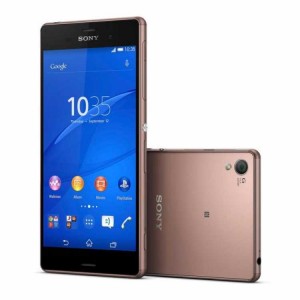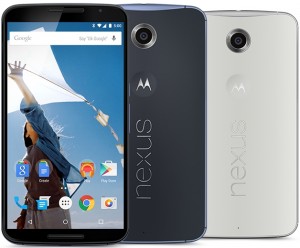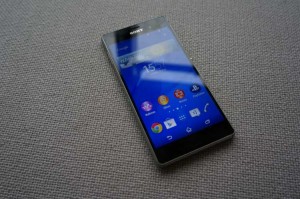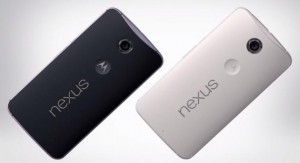Both the Sony Xperia Z3 and Nexus 6 have just been launched, with the Xperia Z3 available at T-Mobile, and the Nexus 6 being put up for pre-order on October 29. The Nexus 6 came with the added benefit of Android 5.0 Lollipop, which should come as one of the best mobile operating systems on the market. The Sony Xperia Z3 will also be getting the Android 5.0 Lollipop update in a few weeks, and we’re curious to see how it will look on the Xperia Z3. Both these flagships are great smartphones and will surely be hits on the U.S. market, but we would still like to compare them to see how they size up to each other.

Sony Xperia Z3 copper
The Galaxy Note 4 has a smaller, but more saturated screen to power, though, so we can expect to see at least a day and a half of battery life with mixed use on the Nexus 6. That still doesn’t beat the great battery on the Xperia Z3 and Xperia Z3 Compact, but just as the Galaxy Note 4 received an update that improved the battery life even more, a similar Nexus 6 update could be on its way, too. Both the Nexus 6 and Sony Xperia Z3 are now available for pre-order as well as purchase, so if you are set on getting the device with the best battery life out there, you should go for the Xperia Z3. If you’re skeptical but still like the new Nexus 6, you might want to wait until an international release of the device so that you can read some reviews about real life battery performance.
The Nexus 6 price is on the hefty side, which is kind of odd, seeing as the Google Nexus line usually aims to offer high quality handsets for lower prices. The Nexus 6 should be a model device for Android 5.0 Lollipop, according to Google and aims to show manufacturers and OEMs how Android 5.0 Lollipop and a high quality handset coupled together should look like. The Nexus 6 might be seen as a guideline for future Android device makers and the phablet does live up to most peoples’ expectations. You will be able to get your hands on the Nexus 6 starting October 29 and the device will set you back $650 off-contract for the 32 GB variant. The Sony Xperia Z3 price is about the same for the unlocked version, around $600, so if you have a set budget when trying to decide between the Xperia Z3 and Nexus 6, price shouldn’t be a deal-breaker, because the two handsets are just as expensive.

Nexus 6 Midnight Blue, Cloud White
The Sony Xperia line is famous for being water- and dustproof, and the Xperia Z3 is no exception, with an IP68 certification. That means that you can even use the Xperia Z3 to take short videos under water and won’t have to worry about ruining your new device. The Nexus 6, on the other hand, doesn’t have an IP certification, but that doesn’t mean you’re going to end up with a ruined phone if you splash some water on it by accident. According to Motorola, the Nexus 6 is water resistant to some extent, but you still shouldn’t take it swimming. That being said, the Xperia Z3 would be more suitable for those of you who have more active lifestyles that involve a lot of water-mingling or off-road running and activities of the sort. The Nexus 6 and its moderate water resistance are not something to be overlooked, though, and it’s a nice feature to see on a Nexus device.
The Nexus 6 is actually a phablet, with a 5.96 inch AMOLED screen with a 1440*2560 resolution, the screen featuring Corning Gorilla Glass 3 protection. That makes for a pretty big device, measuring 159.3 mm in height, 83 mm in width and 10.1 mm in thickness. The Sony Xperia Z3 has a substantially smaller 5.2 inch IPS LCD screen with a lower, 1080*1920 resolution, made out of a shatter-proof glass and featuring a Triluminous display. The measurements on the Xperia Z3 are as follows: 147 mm in height, 72 mm in width and 7.3 mm in thickness. That being said, it is clear that while the Xperia Z3 seemed a bit bulky and a large so far, it is in fact much thinner and more maneuverable than the Nexus 6. That doesn’t mean that the Nexus 6 has a bad design, it just means that those who would rather use their devices with one hand, would be more comfortable with the Xperia Z3. Nonetheless, if you’re a fan of great, bright, crisp screens, the Nexus 6 packs more pizels, even if it’s larger. The Nexus 6 pixel density is 493 ppi, while the Xperia Z3 one is 424 ppi. You probably won’t see the difference unless you put the two handsets side by side, because the human eye won’t sense differences above 350 ppi, but you will be able to see more vivid colors and brightness on the Nexus 6.

Sony Xperia Z3 has glass front and back panels
The Xperia Z3 and Nexus 6 are powerhouses, so you won’t be disappointed by processing power and speed on either one of them. They both are fair competitors to the Galaxy Note 4, iPhone 6 and 6 Plus as well as the HTC One M8. The Nexus 6 runs on a quad core Snapdragon 805 CPU backed by 3 GB RAM, Adreno 420 CPU and either 32 or 64 GB internal storage. Google and Motorola decided to skip the inclusion of a microSD card slot on the Nexus 6, so you will have to make due with the default internal storage or use cloud storage as a backup. The Xperia Z3 has a slightly less powerful CPU, the quad core Snapdragon 801 CPU backed by the same 3 GB RAM, Adreno 330 CPU and either 16 or 32 GB internal storage. Compared to the Nexus 6, people will appreciate the microSD card slot on the Xperia Z3, which allows users to expand memory to up to 128 GB. Although there’s a slight difference in CPU, the Xperia Z3 and Nexus 6 will both outperform the older models like the Nexus 5, Xperia Z2, iPhone 5s, HTC One M7 and Galaxy S4. They do size up nicely to current flagships like the HTC One M8, Galaxy S5, iPhone 6 and 6 Plus as well as Galaxy Note 4. We would have like 64 bit support on the Nexus 6, so that it would complement Android 5.0 Lollipop which was made specifically with 64 bit OS in mind.
You will find an NFC port on both handsets, as well as Wi-Fi 802.11 a/b/g/n/a/c, Bluetooth 4.0, stereo speakers and a 9 axis sensor. Neither phones have IR blasters, though, so you won’t be able to use your device as a remote control in your house, unless you use dedicated apps for your home automation devices. As stated before, both the Xperia Z3 and Nexus 6 will end up with the latest Android operating system, Android 5.0 Lollipop. The Nexus 6 has been endowed with a 13 MP sensor on the rear and a 2 MP sensor on the front, while the Xperia Z3 has a 20.1 MP shooter on the rear and a 2.2 MP one on the front. The Nexus 6 camera does have optical image stabilization and a dual LED ring flash, while the Xperia Z3 lacks the OIS, but does have an LED flash on the rear. Camera-wise, we’ve been disappointed by the previous edition LG Nexus 5, but we still can’t say much about the improved sensor on the Nexus 6 until we manage to take some sample shots. It seems to be a powerful camera, but the Xperia Z3 Exmor sensor has impressed us quite a few times in the past few weeks, so we’ll have to wait and see if the Nexus 6 can live up to that performance.

The Nexus 6 looks much like the Moto X 2014
The Xperia Z3 and Nexus 6 aren’t too different, but the differences that we find are in key areas like the camera, the size, the display and the battery. Since the Nexus 6 hasn’t been thoroughly tested yet, we can’t say for sure that it’s better or worse than the Xperia Z3. The Xperia Z3 is an impressive device, but until we see a real-life evaluation of the Nexus 6 performance, we can’t say it’s superior yet, although it is promising. This is difficult conclusion will ultimately, it will depend on the user. The Nexus 6 is a powerhouse phablet which will surely impress with its screen, as well as stock Android 5.0 Lollipop, while the Xperia Z3 has a wonderful camera, glass build and great battery life. Would you rather take advantage of the great camera and IP certification on the Xperia Z3 or would you prefer the phablet Nexus with the impressive screen and Android Lollipop out of the box?
